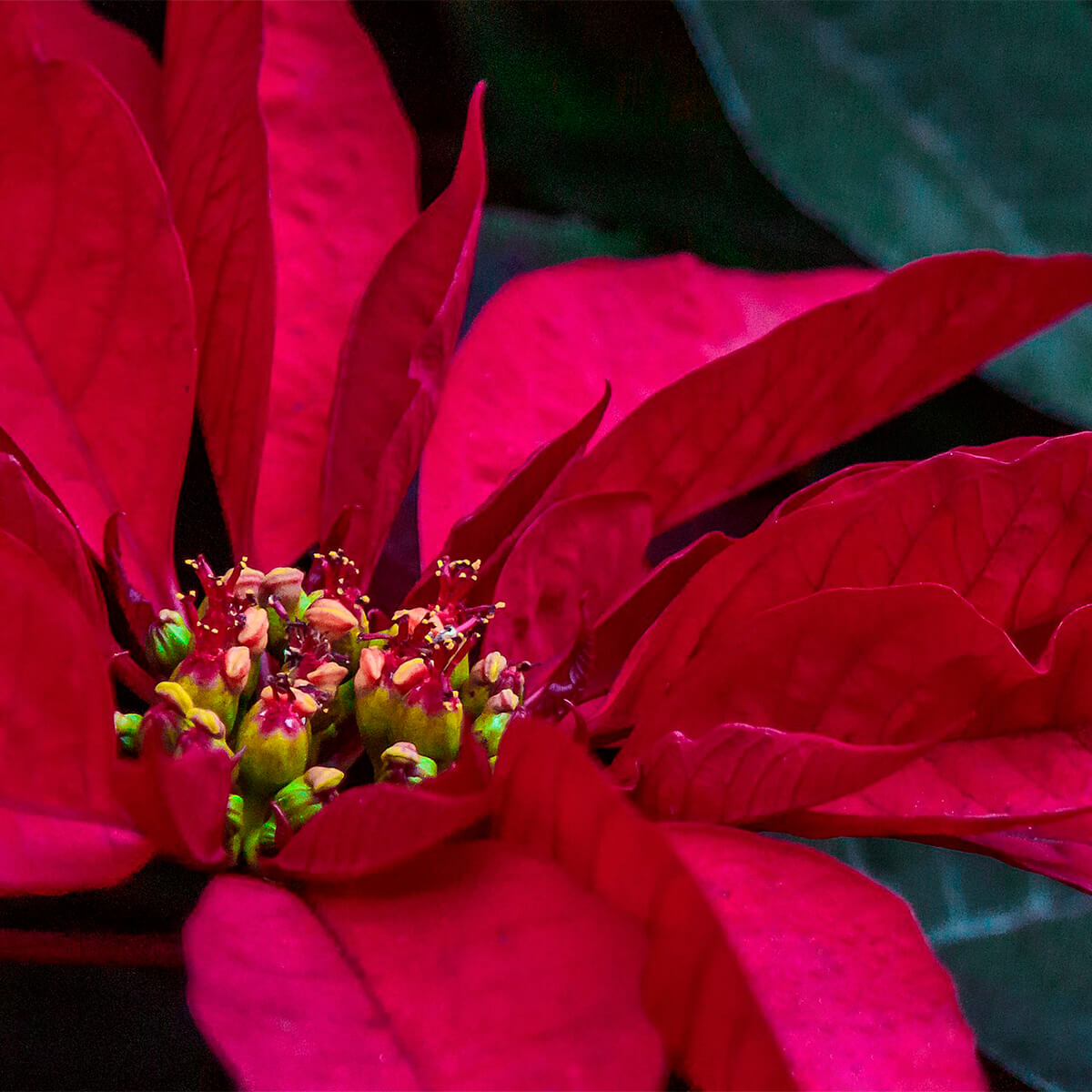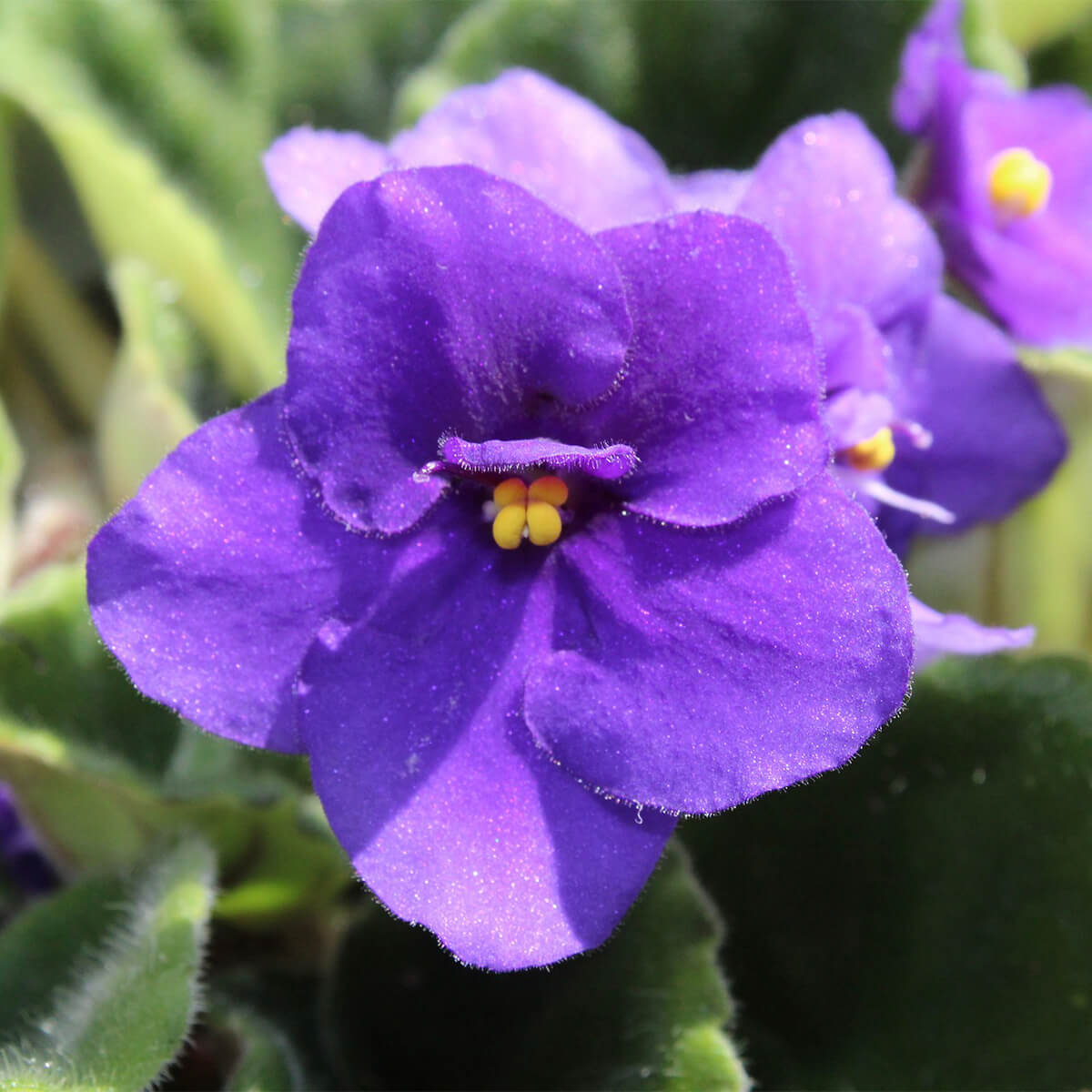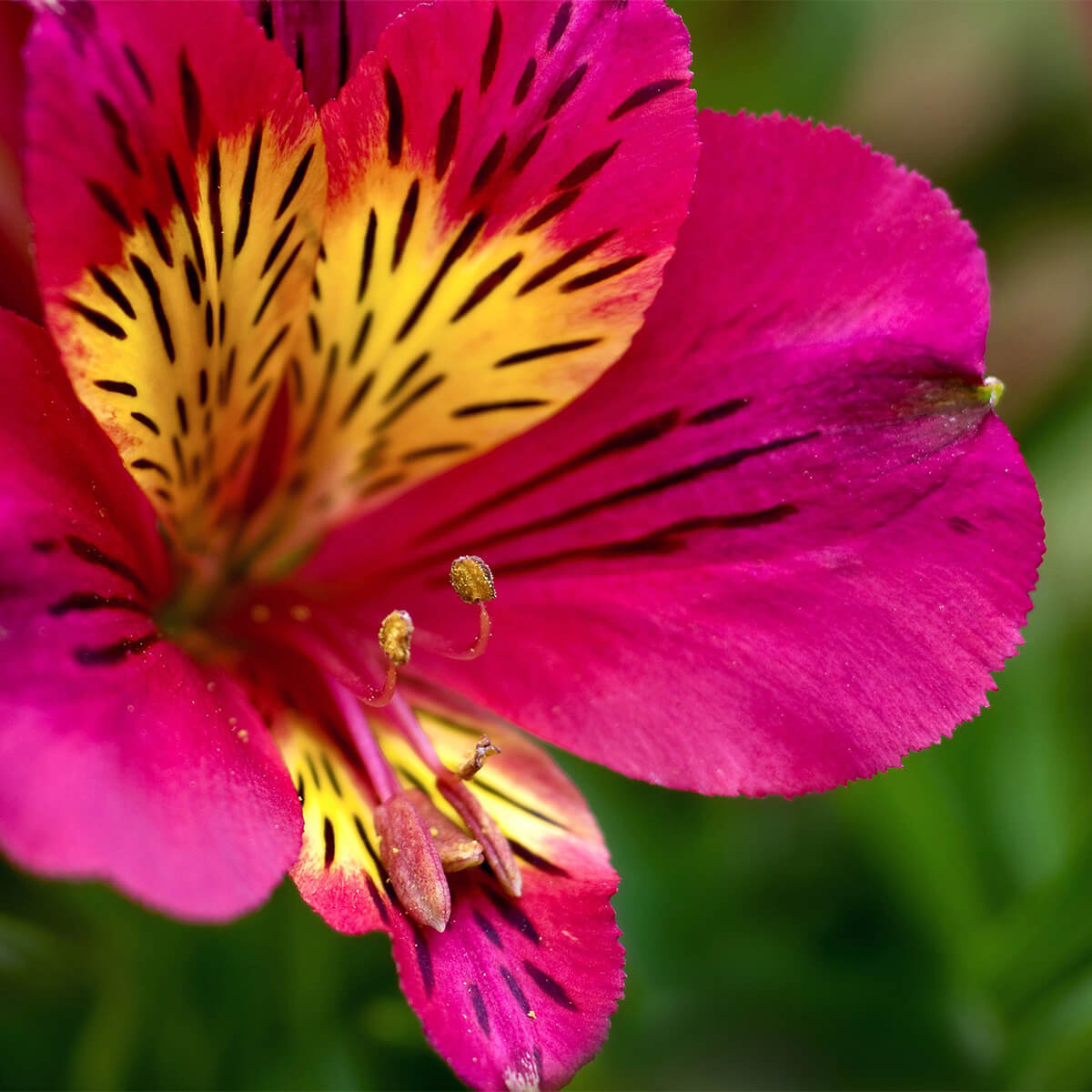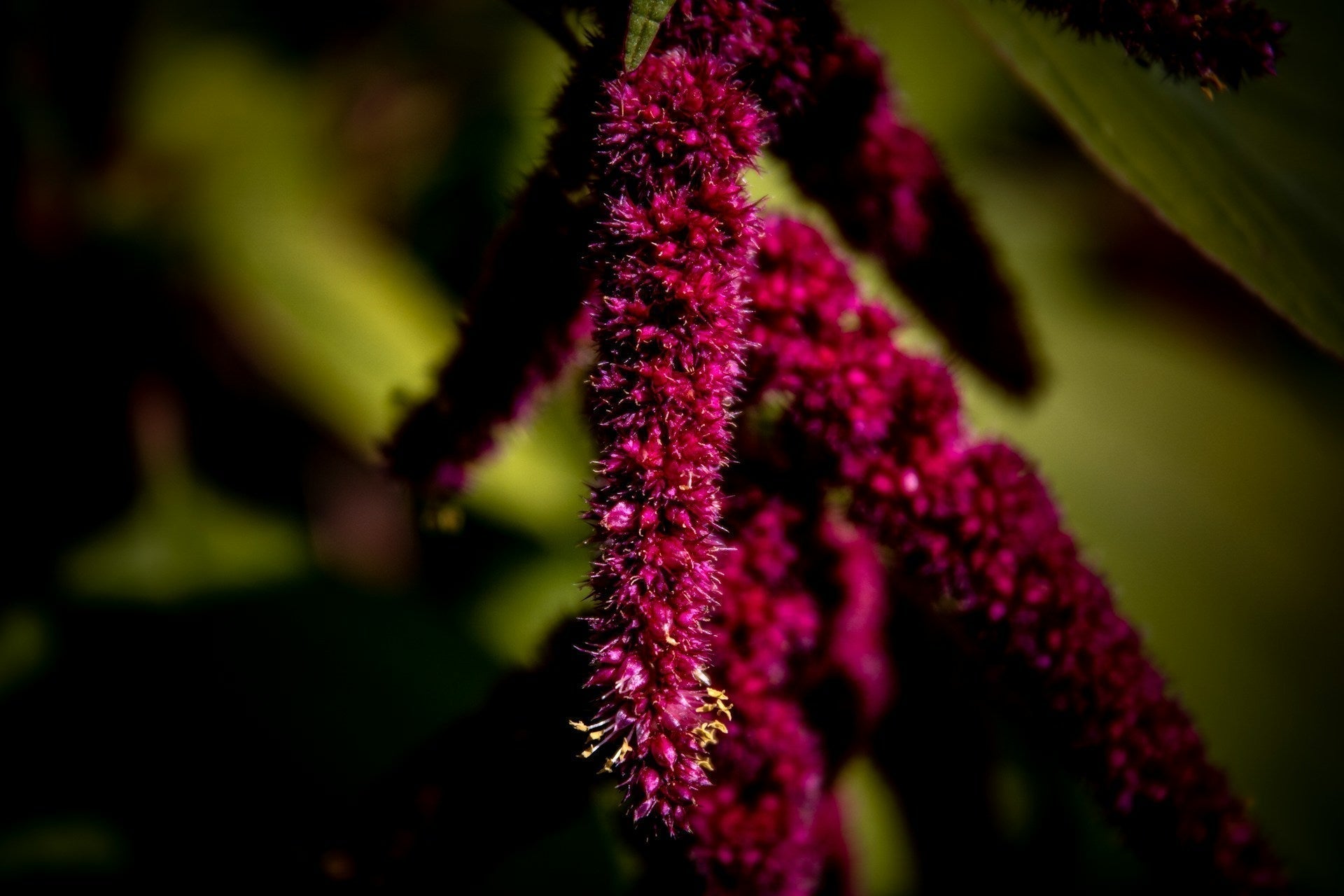Poinsettia – Euphorbia pulcherrima
Symbolism: Poinsettias symbolize goodwill and community spirit during Christmas time. The shape of the poinsettia flower is thought to represent the Star of Bethlehem, with the red leaves symbolizing the blood of Christ.
Birth Month: December
Description: Poinsettias are shrubs or small trees, reaching heights of 2 to 13 feet, with dark green dentate leaves. The coloured bracts can come in a variety of shades like flaming red, orange, pale green, cream, pink, white, or marbled. They are often mistaken for flower petals but are actually leaves.
Though often stated to be highly toxic, the poinsettia is not dangerous to pets or children. Exposure to the plant, even consumption, most often results in no effect, though it can cause nausea, vomiting, or diarrhea.
Named after: Poinsettias got their common English name after botanist, physician and first U.S. Ambassador to Mexico, Joel Roberts Poinsett, who introduced the plant to the U.S. in 1828.
Latin/Scientific name: Euphorbia pulcherrima
Native to: Mexico and Central America
Flowering period: The poinsettia is a so-called short-day plant. In fall, the naturally shorter days initiate the formation of new flower buds and cause the bracts to become coloured. This phenomenon usually begins in mid-September, sometimes earlier for certain cultivars.
Vase life: 2 weeks
Popular use in floral arrangements or bouquets: Poinsettias are typically used as potted plants during the Christmas season.
When in stock in our shops: During the Christmas holiday season, from November to December. Check out our poinsettias in our winter collection.
Potted plant care
Light
-
Place your potted poinsettia plant in a location that receives bright, indirect sunlight for at least six hours a day.
-
Avoid direct sunlight as it can scorch the leaves.
-
Poinsettias can tolerate low light conditions but may not produce vibrant colors in low light.
Soil
-
Use a well-draining potting mix that contains perlite or vermiculite to ensure proper drainage.
-
Poinsettias prefer slightly acidic soil with a pH between 6.0 and 6.5.
Water
-
Water your poinsettia plant when the top inch of soil feels dry to the touch.
-
Water the plant thoroughly and allow excess water to drain out of the pot.
-
Keep the soil evenly moist, but avoid overwatering as it can cause root rot.
Temperature & Humidity
-
Poinsettias prefer cool temperatures (60-70°F, 15-21°C).
-
They do not require high humidity levels and can tolerate dry indoor air.
Feeding
-
Fertilize your poinsettia plant every 2-3 weeks with a balanced, water-soluble fertilizer during the growing season (spring and summer).
-
Avoid fertilizing during the winter months when the plant is dormant.
Transitioning Indoors to Outdoors
-
Poinsettias are typically grown as indoor plants and are not suited for outdoor growing.
-
It is not recommended to transition poinsettia plants from indoors to outdoors.







